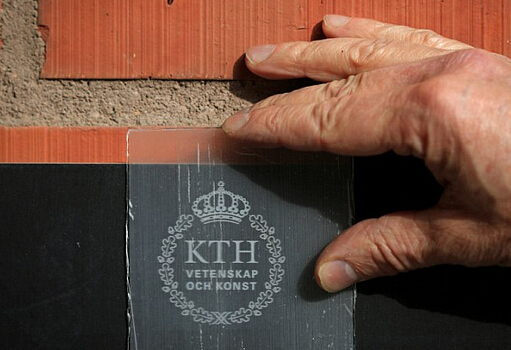Glass windows may soon be a thing of the past.
玻璃材质的窗户可能很快会成为过去式。
Researchers from KTH Royal Institute of Technology in Stockholm have developed a transparent wood material that could change the way we construct buildings and solar panels.
位于斯德哥尔摩的瑞典皇家理工学院的研究人员发明了一种透明的木材,这种木材可能改变我们搭建房屋和太阳能电池板的方法。
The new material is suitable for mass production, the researchers say, and is a low-cost renewable resource.
研究人员称,这种新材料适合批量生产,还是一种低成本的可再生资源。
If used in the construction of homes and buildings, a transparent wood material has potential to improve indoor lighting, allowing natural light in through the walls. This could save on the costs of artificial lighting, and may even have use in solar cell windows.
如果用透明木材建造住宅和大楼,自然光线有可能穿透墙壁,增加室内亮度。这不仅可以节约人工照明的成本,甚至可以用在太阳能窗户上。

While this is not the first example of optically transparent wood, previous developments have focused on the study of wood anatomy on a microscopic level. Researchers say this new material has large scale applications.
虽然这不是光学透明的木材的第一个例子,但是以前的发展都集中在微观层面上的木材解剖研究。 研究人员表示,这种新型材料可以大规模使用。
Panels of transparent wood could be used for windows or semi-transparent facades, to let light in while still maintaining privacy. And, it is also can be used for solar cells, as it traps light, thus boosting efficiency of the cells.
这种新型透明木材可以作为窗户或者半透明的房体材料,因为它既能够接受阳光照射,又能维护个人隐私。它也能用作太阳能电池板,当捕捉光线的时候,可以提高电池板的效率和性能。
'Transparent wood is a good material for solar cells, since it's a low-cost, readily available and renewable resource,' says Lars Berglund, a professor at Wallenberg Wood Science Center at KTH.
瑞典皇家理工学院瓦伦堡木材科学中心的教授拉兹·贝格隆德表示:“由于这种透明木材成本低、易获得且可重复利用,因此是很好的太阳能电池材料。”












